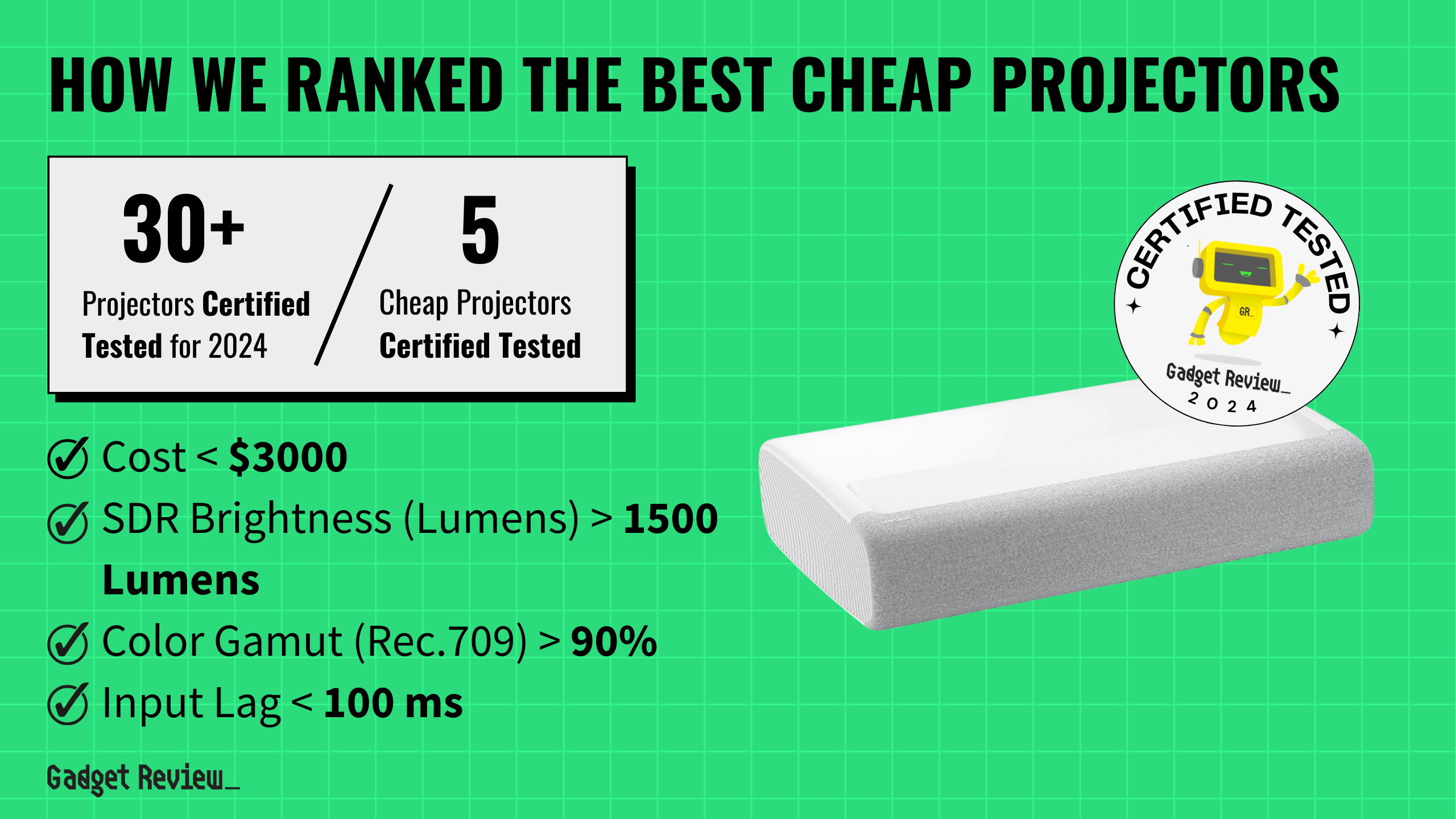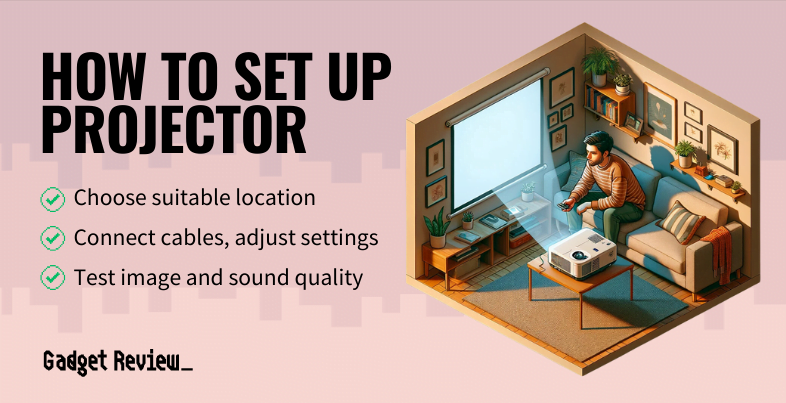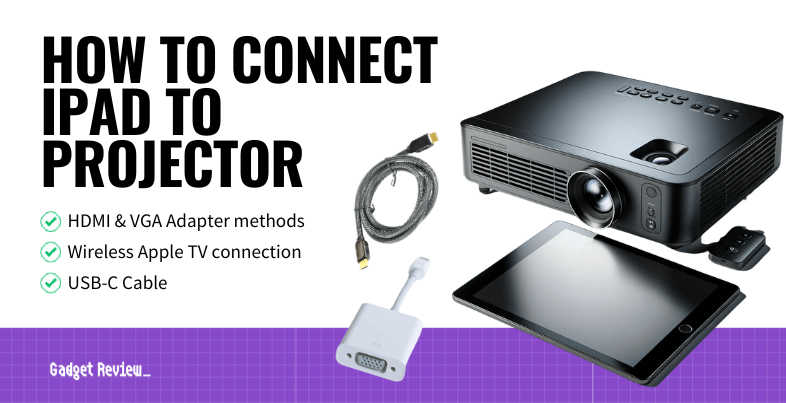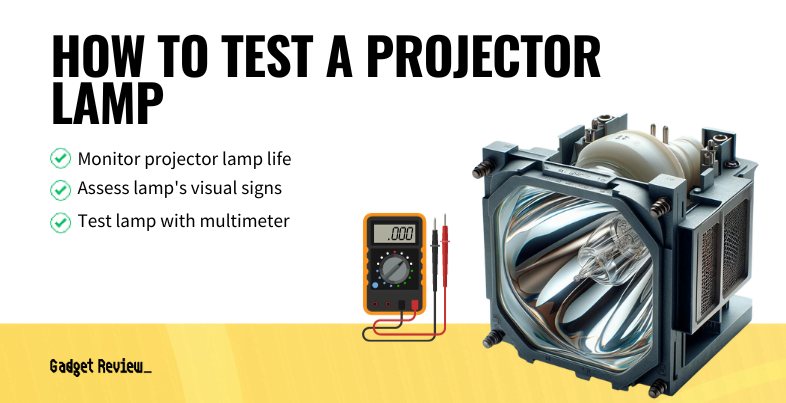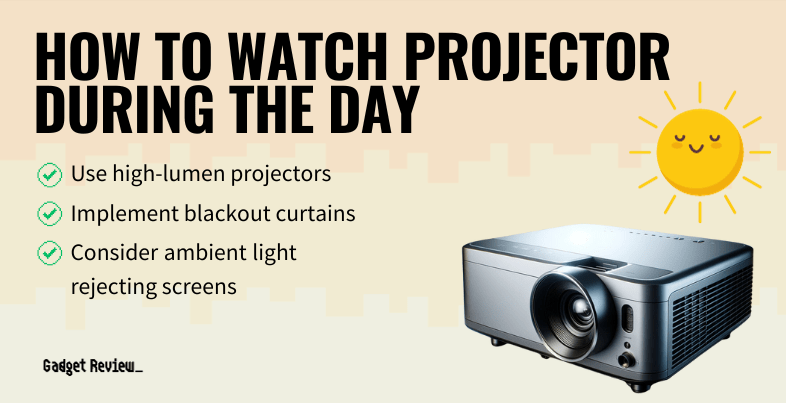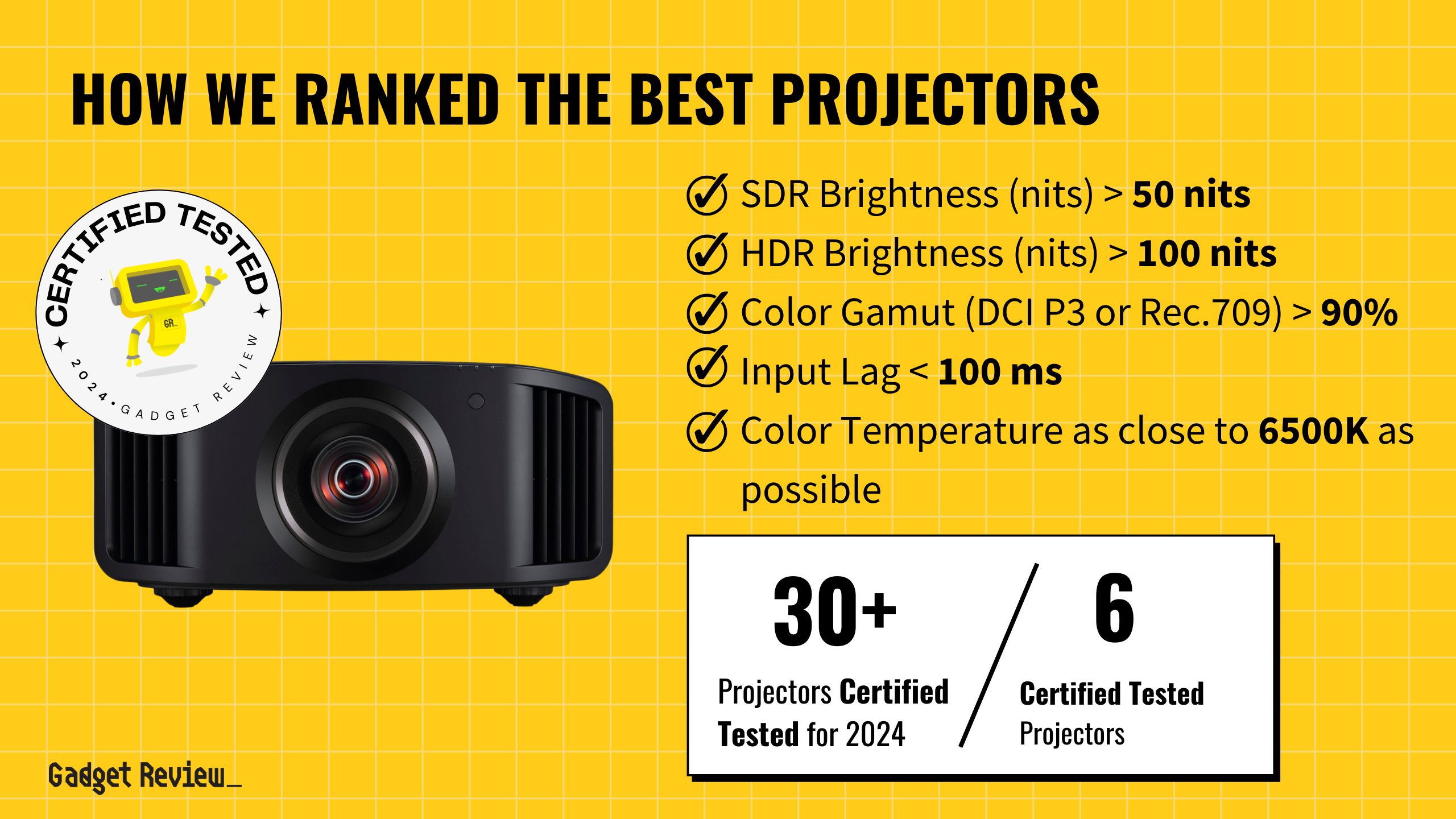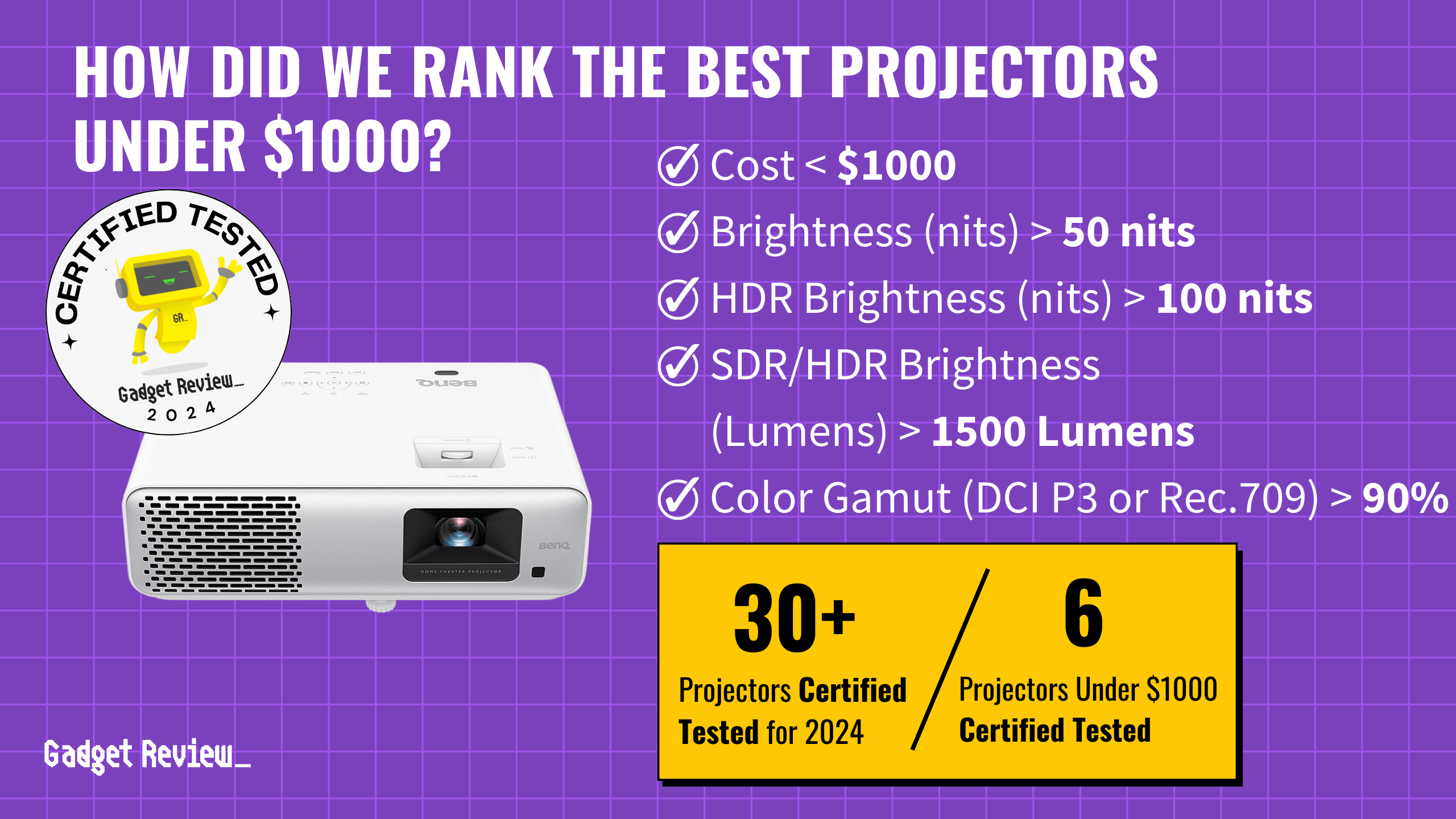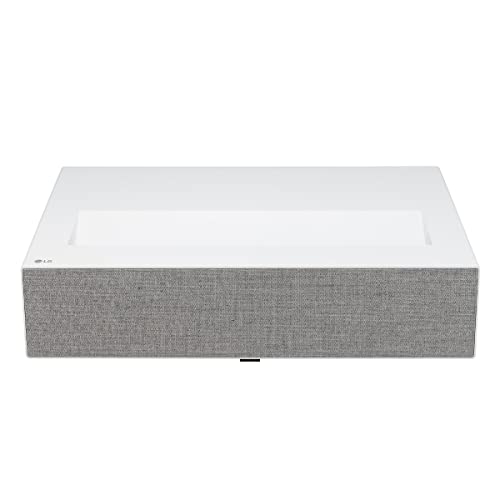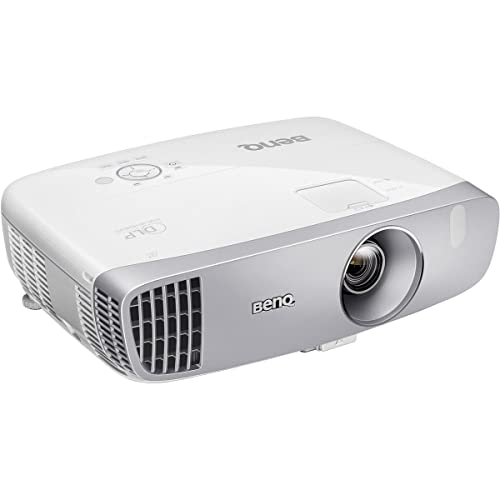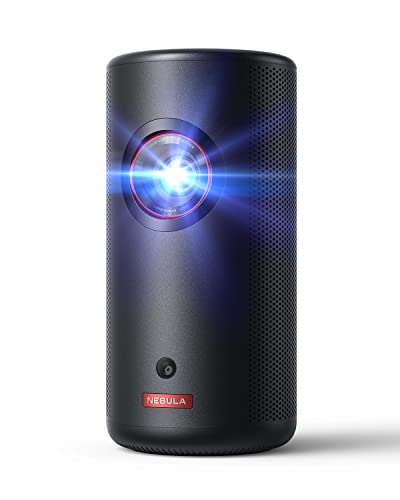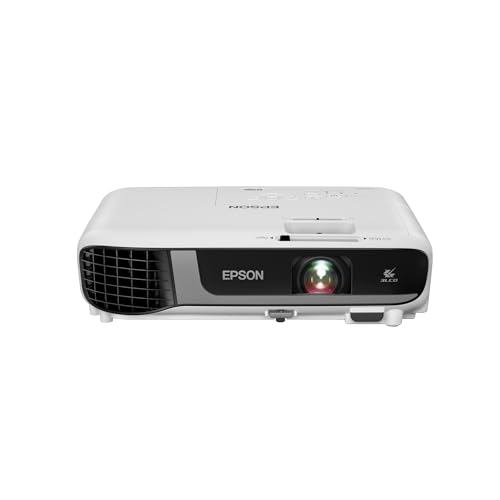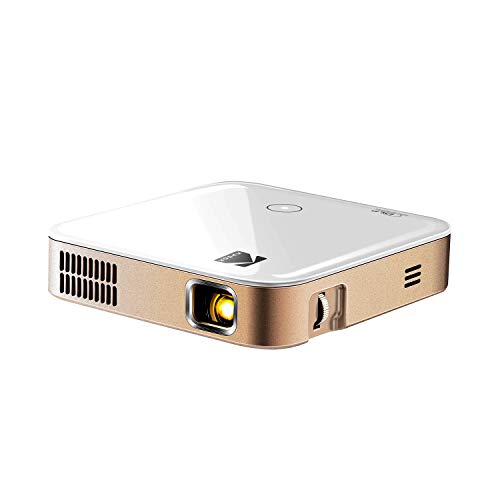When you’re hunting for the best cheap projectors, keep it simple: look for brightness, image quality, and connectivity. Aim for over 1500 SDR lumens for good brightness, decent contrast, multiple connectivity options, and portability for easy setup and movement.
Our unique evaluation covered over 30 projectors, analyzing 10,299 reviews. Only five projectors earned a spot in our buying guide. Using our AI-powered True Score methodology, we certified products as tested and filtered out fake and low-quality reviews. These top-performing projectors performed superbly in testing, offering exceptional value and performance.
How Did We Rank the Best Cheap Projectors?
We’ve scrutinized more than 200 sources to curate a definitive buying guide for the best cheap projectors. By assessing testing methodologies, customer feedback, and expert reviews, we pinpointed the essential criteria: 2 required test results and 1 desirable feature. Our comprehensive evaluation targets the key aspects that matter most, providing you with the ultimate projector recommendations for a budget-friendly price.
Our commitment to unbiased reviews is powered by our ‘True Score’ system, targeting low quality and fake reviews. When you shop through our links, you’re backing our mission. Dive deeper to see how.
? Test Criteria
- SDR Brightness: Equal to or greater than 1500 lumens or more to help produce a bright and clear display.
- Color Gamut: At least 90% of the Rec.709 color gamut, providing rich and vibrant colors.
? “Nice To Haves”
- Input Lag: An input lag of less than 100 milliseconds, to prevent delays between what’s on screen and your reaction to them in games.
Latest Updates
- 06/15/2024: Republished the list to include the best cheap projectors based on our True Score system.
Top Cheap Projectors For 2025
Prices accurate at the time of publishing

Best Overall

Runner Up

Best Value

Best Budget

Best Mid-Range

Premium Pick
Samsung Premiere LSP9T
The Samsung Premiere LSP9T offers top-notch quality without compromise, boasting high brightness, stellar color accuracy, and versatile functionality.
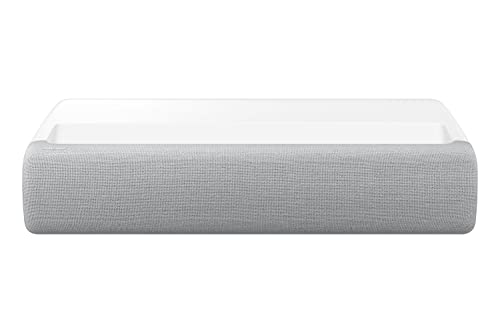
True Score
90926Experts
94174Customers
Cosmic Wonder
 $4,287.99
$4,287.99Read More
Snapshot
Reasons to Buy
- High brightness
- Excellent image quality
Reasons to Avoid
- Slightly high input lag
- Rainbow effect
Specifications

Resolution 3840 x 2160 (4k) Refresh Rate 60 Hz 
Display Technology DLP 
Contrast Ratio 2,000,000:1 
Digital Keystone Yes 
HDR HDR10, HDR10+, Hybrid Log-Gamma (HLG) 
Max Distance 9.36″ 
Max Screen Size 130″ 
3D Ready Yes 
Aspect Ratio 16:9 
Brightness 2800 Lumens 
Depth 14.5″ 
Height 5″ 
Integrated Speakers Yes 
Light Source Laser 
Light Source Life 20000 hrs 
Min Distance 4.44″ 
Min Screen Size 100″ No – 
Noise Level 32 dB 
Portable No 
Smart Functionality Yes 
Sync Technology – 
TV Tuner Yes 
ThrowType Ultra Short Throw Technology 
Video Inputs Ethernet, HDMI 2.0, USB 
Weight 25 lbs 
Width 21.6″ All Specs
Test Results
SDR Brightness (Lumens) 2,716 HDR Brightness (Lumens) 2,782 Contrast Ratio (x:y) 0 Input Lag (ms) 56 Color Gamut % (Rec. 709) 241 Color Gamut % (DCI P3 uv) 161 SDR Brightness (nits) 0 HDR Brightness (nits) 0 SDR Color Temperature (K) 0 HDR Color Temperature (K) 0 Color Gamut % (Rec. 2020) 0 Color Gamut % (BT.2020) 109 Color Gamut % (BT. 709) 0 All Tests
All Retailers
- $4,287.99
- $5,497.99$6,498Save $1
- $5,499.99$6,000Save $500
Our Verdict
The Samsung Premiere LSP9T is an excellent choice for a cost-effective short-throw projector that does not compromise quality. Despite being the most expensive option on our list, it offers unparalleled brightness, with SDR and HDR measurements at an impressive 2716 and 2782 lumens, respectively. This high brightness level is essential for maintaining clear, vivid images in well-lit rooms, making it suitable for everything from home theaters to bright office environments.
This projector is particularly noteworthy for its value in delivering 4K resolution and stellar color accuracy. It has best-in-class coverage of the Rec.709 color gamut with an amazing 240.50%, ensuring that it reproduces a wide range of colors with remarkable accuracy and vibrancy, ideal for immersive visual experiences. Moreover, its decent input lag of 55.9 ms provides a satisfactory gaming experience. This is particularly notable when comparing it to the Hisense PX2, which has a lower SDR brightness of 2488 lumens, color gamut coverage at 117 % of Rec. 709, and a higher input lag of 69.8 ms, even though they are similarly priced, making this Samsung model a better value.
The Samsung Premiere LSP9T is a versatile option for home entertainment and professional settings. Its ability to deliver high-quality visuals with excellent color accuracy makes it a reliable choice for various uses, from movie nights and gaming sessions to business presentations and educational sessions. This projector offers an impressive blend of performance and affordability, making it a smart investment if you need versatile functionality.
Read Less

Best Overall

Runner Up

Best Value

Best Budget

Best Mid-Range

Premium Pick
Epson Home Cinema 3800
Best For Church
The Epson Home Cinema 3800 combines low input lag for gaming with high brightness and color accuracy, ideal for versatile use at a budget-oriented price.
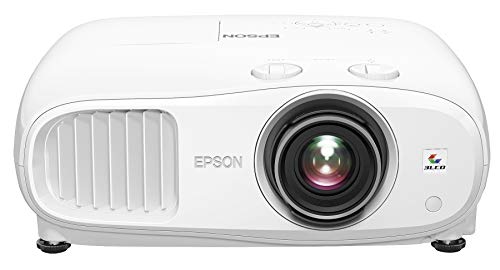
True Score
83846Experts
871kCustomers
Absolutely Fresh
 $1,649.99
$1,649.99Read More
Snapshot
Reasons to Buy
- Great brightness
- Great image quality
- 4K resolution
Reasons to Avoid
- Lacks a wide color gamut
- The lamp output may not match the specs
- Mediocre 28-ms input lag
Specifications

Resolution 1920 x 1080 (Full HD) Refresh Rate 60 Hz 
Display Technology 3LCD, LCD 
Contrast Ratio 100,000:1, 200,000:1 
Digital Keystone ± 30° (manual) 
HDR No, Yes 
Max Distance 300″ 
Max Screen Size 300″ 
3D Ready No, Yes 
Aspect Ratio – 
Brightness 3000 lumens 
Depth 13″ 
Height 6.5″ 
Integrated Speakers No, Yes 
Light Source UHP lamps 
Light Source Life 3,500 hrs 
Min Distance 0″ 
Min Screen Size 40″ No – 
Noise Level 35 dB 
Portable No, Yes 
Smart Functionality Automatic Adjustments, Bluetooth, Eco-Friendly, Energy-Saving, Remote, USB 
Sync Technology VRR 
TV Tuner No, Yes 
ThrowType 1.32 to 2.15:1. 
Video Inputs HDMI 2.0, USB, VGA 
Weight 15.2 lbs 
Width 16.1″ All Specs
Test Results
SDR Brightness (Lumens) 2,176 HDR Brightness (Lumens) 0 Contrast Ratio (x:y) 24k Input Lag (ms) 28 Color Gamut % (Rec. 709) 114 Color Gamut % (DCI P3 uv) 77 SDR Brightness (nits) 275 HDR Brightness (nits) 235 SDR Color Temperature (K) 0 HDR Color Temperature (K) 0 Color Gamut % (Rec. 2020) 0 Color Gamut % (BT.2020) 0 Color Gamut % (BT. 709) 0 All Tests
All Retailers
- $1,649.99
- $1,699.99
- $1,699.99
- $1,699.99
Our Verdict
If you’re looking for a cheap projector that is also excellent for gaming, the Epson Home Cinema 3800 offers a fantastic input lag of just 28 ms, it’s ideal for fast-paced gaming where every millisecond counts. Additionally, its brightness of 2176 Lumens in standard dynamic range (SDR) ensures that visuals stay bright and vivid, crucial for both daylight viewing and well-lit indoor environments. It provides great value to those seeking a cost-effective projector that delivers a clear and dynamic viewing experience.
This projector’s high contrast ratio of 23971:1 and coverage of 113.7% of the Rec. 709 color gamut deliver true-to-life colors and deep blacks, which is more than adequate for most home and professional uses. However, if you are a graphic designer, the Samsung Premiere LSP9T has 240.5% of the Rec. 709 coverage and 161.4% of the DCI P3 color gamuts. This makes it ideal for precise color reproduction needs, such as in design, photography, and video production.
This versatility makes the Epson Home Cinema 3800 a practical choice for many scenarios, whether you’re streaming, gaming, or giving office presentations. Its color accuracy and visual clarity performance make it a fantastic choice for those needing a reliable, color-accurate display solution at a lower cost. This projector offers an attractive combination of affordability, functionality, and high-quality picture quality, making it a valuable addition to any setup.
Read Less

Best Overall

Runner Up

Best Value

Best Budget

Best Mid-Range

Premium Pick
Epson Home Cinema 2350
The Epson Home Cinema 2350 offers low input lag for gaming and solid performance across various applications, making it a versatile, budget-friendly choice.
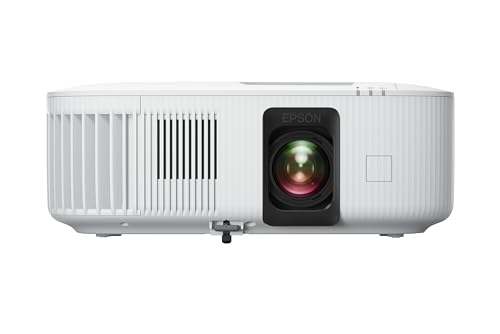
True Score
75763Experts
79417Customers
Mixed Reviews
 SAVE $300$1,299.99$999.99
SAVE $300$1,299.99$999.99Read More
Snapshot
Reasons to Buy
- Low Input Lag and Response Time
- HDR Compatible
Reasons to Avoid
- Below Average Brightness
- Subpar Image Quality
- Produces Noise
Specifications

Resolution 3840 x 2160 (4k) Refresh Rate 120 Hz 
Display Technology 3LCD 
Contrast Ratio 35,000:1 
Digital Keystone Yes 
HDR HDR10, Hybrid Log-Gamma (HLG) 
Max Distance 360″ 
Max Screen Size 500″ 
3D Ready No 
Aspect Ratio 16:9 
Brightness 2800 Lumens 
Depth 10.9″ 
Height 4.82″ 
Integrated Speakers Yes 
Light Source Lamp 
Light Source Life 7500 hrs 
Min Distance 36″ 
Min Screen Size 40″ No – 
Noise Level 36 dB 
Portable Yes 
Smart Functionality Yes 
Sync Technology – 
TV Tuner No 
ThrowType Standard Throw 
VRR n/a 
Video Inputs HDMI 2.0, USB 
Weight 9 lbs 
Width 13.10″ All Specs
Test Results
SDR Brightness (Lumens) 1,582 HDR Brightness (Lumens) 0 Contrast Ratio (x:y) 0 Input Lag (ms) 26 Color Gamut % (Rec. 709) 93 Color Gamut % (DCI P3 uv) 73 SDR Brightness (nits) 0 HDR Brightness (nits) 0 SDR Color Temperature (K) 0 HDR Color Temperature (K) 0 Color Gamut % (Rec. 2020) 0 Color Gamut % (BT.2020) 0 Color Gamut % (BT. 709) 0 All Tests
All Retailers
- $999.99$1,300Save $300
- $999.99$1,300Save $300
- $1,299.99
Our Verdict
If you are seeking an affordable yet capable projector, the Epson Home Cinema 2350 stands out, particularly due to its best-in-class input lag of 26 ms. This enhances gaming sessions by ensuring that the action on screen is as immediate as the controls in the player’s hands, which is a crucial advantage for competitive gaming and fast-paced video games.
The Epson Home Cinema 2350’s performance in key specifications makes its prowess in certain areas evident. While its SDR brightness is the lowest on our list at 1582 lumens, it offers sufficient brightness for most home environments. Furthermore, its Rec. 709 color gamut coverage is at 92.5%, which means it can display most of the color range used in HD TV broadcasts, making it suitable for those who use their projectors for watching television and movies. However, if you need better color accuracy and don’t mind paying more, the Epson Home Sinema 3800 offers comparable input lag at 28 ms and much better Rec. 709 coverage at 113.7%.
Regarding other technical criteria, the Epson Home Cinema 2350 delivers solid performance across the board. This balanced capability makes it a versatile projector suitable for various uses beyond gaming, including streaming and educational purposes, where clarity and color accuracy are appreciated.
The Epson Home Cinema 2350, with its low input lag, respectable brightness, and color accuracy, is a great all-rounder if you need a budget projector. It’s a practical choice if you’re looking for a multi-purpose projector that performs well across various settings, from entertainment to informal business presentations, ensuring good value for those on a tight budget.
Read Less

Best Overall

Runner Up

Best Value

Best Budget

Best Mid-Range

Premium Pick
Optoma CinemaX P2
Best For Daylight Viewing
For HDR content on a budget, the Optoma CinemaX P2 impresses with quality and affordability, delivering vivid visuals for immersive home cinema experiences.
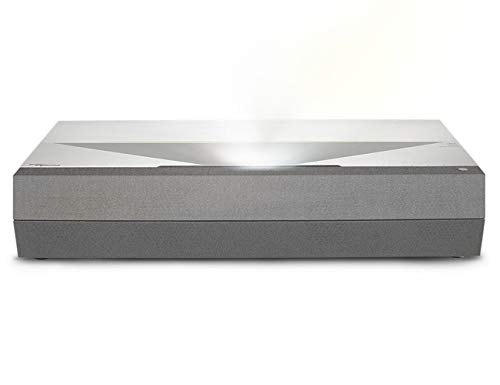
True Score
74760Experts
78405Customers
Mixed Reviews
 SAVE $200$1,999.00$1,799.00
SAVE $200$1,999.00$1,799.00Read More
Snapshot
Reasons to Buy
- Impressive brightness output
- High image quality
Reasons to Avoid
- High input lag
- Prone to rainbow artifacts
Specifications

Resolution 3840 x 2160 (4k) Refresh Rate 60 Hz 
Display Technology DLP 
Contrast Ratio 2,000,000:1 
Digital Keystone Yes 
HDR Yes 
Max Distance 17″ 
Max Screen Size 120″ 
3D Ready Yes 
Aspect Ratio 16:9 
Brightness 3000 lumens 
Depth 14.96″ 
HDMI Type 2.0 
Height 5.11″ 
Integrated Speakers Yes 
Light Source Laser 
Light Source Life 30,000 hrs 
Min Distance 6″ 
Min Screen Size 85″ 
Noise Level 26 dB 
Portable No 
Smart Functionality Amazon Alexa, Android TV, Google Assistant 
Sync Technology n/a 
TV Tuner No 
ThrowType Ultra Short Throw Technology 
Video Inputs Ethernet, HDMI 2.0, USB 
Weight 24.25 lbs 
Width 22″ All Specs
Test Results
SDR Brightness (Lumens) 2,488 HDR Brightness (Lumens) 1,990 Input Lag (ms) 70 Color Gamut % (Rec. 709) 117 Color Gamut % (DCI P3) 79 All Retailers
- $1,799.00$1,999Save $200
- $1,999.99
- $1,999.00
Our Verdict
If you want a cheap projector for HDR content, the Optoma CinemaX P2 stands out as an affordable projector option that doesn’t compromise on quality, making it a fantastic choice for budget-conscious home cinema enthusiasts. With SDR and HDR brightness levels at 2488 and 1990 lumens, it offers excellent brightness to ensure clear, vivid visuals in most indoor settings. This projector is particularly effective in delivering immersive viewing experiences in dimly lit rooms due to its 117% Rec. 709 color gamut coverage, which produces rich and vibrant colors essential for captivating displays.
Although the input lag of 69.8 ms might not cater to the needs of hardcore gamers, it is perfectly acceptable for casual gaming and watching standard video content. This slight delay is a reasonable trade-off, considering the cinematic quality it provides, making it ideal for movie nights rather than competitive gaming sessions. However, if you are fine with giving up some brightness and color accuracy for better gaming performance, the Epson Home Cinema 3800 is a little cheaper and has an impressive 28 ms input lag.
The Optoma CinemaX P2’s balanced performance and cost-effective pricing make it an excellent choice for various applications, including streaming and office presentations. Its capabilities in controlled lighting conditions are particularly impressive. If you’re looking for a high-quality projector that aligns with budget considerations and enhances a home entertainment setup, the CinemaX P2 offers substantial value as a versatile and economically priced projector.
Read Less

Best Overall

Runner Up

Best Value

Best Budget

Best Mid-Range

Premium Pick
Hisense PX2
The Hisense PX2 offers impressive brightness, built-in Google TV, and vibrant colors, making it a versatile and budget-friendly choice for home entertainment.
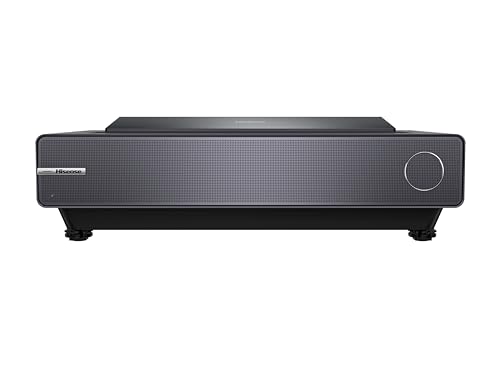
True Score
72745Experts
7621Customers
Mixed Reviews
 SAVE $99$1,997.97$1,899.00
SAVE $99$1,997.97$1,899.00Read More
Snapshot
Reasons to Buy
- Good image quality
- 4K resolution
Reasons to Avoid
- Brightness is average
- Average input lag
- No lens shift or optical zoom
Specifications

Resolution 3840 x 2160 (4k) Refresh Rate 60 Hz 
Display Technology DLP 
Contrast Ratio 200,000:1 
Digital Keystone Yes 
HDR Dolby Vision, HDR10, Hybrid Log-Gamma (HLG) 
Max Distance 15″ 
Max Screen Size 130″ 
3D Ready No 
Aspect Ratio 16:9 
Brightness 2400 Lumens 
Depth 12.8″ 
Height 6.3″ 
Integrated Speakers Yes 
Light Source Laser 
Light Source Life 25,000 hrs 
Min Distance 10.8″ 
Min Screen Size 90″ 
Noise Level 32 dB 
Portable No 
Smart Functionality Google TV, USB 
Sync Technology – 
TV Tuner No 
ThrowType Ultra Short Throw Technology 
Video Inputs Ethernet, HDMI 2.0, USB, USB 3.0 
Weight 20 lbs 
Width 20″ Yes – All Specs
Test Results
SDR Brightness (Lumens) 2,488 Input Lag (ms) 70 Color Gamut % (Rec. 709) 117 Color Gamut % (DCI P3) 79 All Retailers
- $1,899.00$1,998Save $99
Our Verdict
If you want a cheaper projector for your home theater, the Hisense PX2 offers impressive SDR brightness at 2488 Lumens and Google TV built-in for easy streaming and access to a wide range of apps directly from the projector. This eliminates the need for additional streaming devices, simplifying your setup and enhancing the user experience with convenient, smart TV capabilities. The high brightness ensures that images remain crisp and clear, even in bright environments, making it a budget-friendly option for those seeking quality visuals without the high price tag.
The Rec. 709 color gamut coverage at 117% provides vibrant and accurate colors, enhancing the enjoyment of movies and games. Although the PX2’s input lag of 69.8 ms may not cater to the needs of competitive gamers, it’s more than adequate for casual gaming, streaming, and general home theater experiences, where such slight delays are less noticeable. If you prefer a projector better suited for gaming, the Epson Home Cinema 2350 is a much cheaper option with a much quicker input lag of 26 ms, although you are giving up quite a bit of brightness with only 1582 lumens of brightness.
The Hisense PX2’s capability to excel in well-lit rooms makes it a versatile choice for home entertainment, office presentations, or educational settings where high visibility is key. Its high brightness, good color accuracy, and affordability make the PX2 an excellent option if you need a capable projector to boost your home theater experience.
Read Less
Which Criteria Matters for Testing Best Cheap Projectors?
By focusing on these criteria (2 required, 1 nice to have), anyone can quickly and easily compare these projectors and how they’ll perform. This helps you make an informed decision and purchase a projector that will meet all of your needs.
| CRITERIA | RANGE | REQUIRED | DEFINITION |
|---|---|---|---|
| SDR Brightness (lumens) | > 1500 lumens | Yes | The amount of light the projector outputs from the lamp/bulb and projects onto the screen when playing SDR content. |
| Color Gamut % (Rec. 709) | > 90% | Yes | The % of colors a projector can produce defined by the gamut. Rec. 709 is commonly used by HD TV, and is also known as BT.709. |
| Input Lag | < 100 ms | No (Nice to have) | The amount of time it takes for inputs to be registered and processed by the projector and shown on screen. |
Our Trusted Data Sources
We looked at 86+ projector reviewers and found that 16 are trustworthy (60%+ Trust Rating). The three we have listed below are our most trusted for projector.
- Pierre-Olivier Jourdenais – Rtings, LinkedIn
- Geoffrey Morrison – CNET, MuckRack
- Kam Valentine – Projector Reviews, MuckRack
Interested in a comprehensive analysis of our data sources? We’ve got you covered. Below, you’ll find a detailed list of every projector review website we’ve identified, organized by their respective Trust Ratings from highest to lowest. But we didn’t stop there. We’ve meticulously reviewed each publication and verified the data by checking whether the authors have bio links to MuckRack or LinkedIn. We’re committed to not only checking the facts but ensuring their veracity.
Projector Test Data & Results
Disclaimer:
Projectors are complex and difficult to test and evaluate, requiring extensive testing on the same level as televisions to paint a complete picture of how any given unit performs. Unfortunately, the testing behind projectors isn’t as rigorous, and a lot of the data we’ve compiled from expert reviewers has been incomplete at times. With different brightnesses measured from different sources, different color gamut tested and spotty contrast ratio measurements, we’ve done the best we can to leverage the available data when putting together these lists but have also trusted our True Score to help us make decisions when the data isn’t available.
1. SDR Brightness (lumens) Test Results
Projectors have two ways you can realistically measure brightness: in lumens or in nits. Lumens are more common, but brightness in general matters because projectors have to project light strongly enough that it overcomes ambient light without losing detail or color.
Most of the time, a projector is going to be used in a fairly dark room to help give the unit the best chance of displaying content the way it was intended, but higher lumens output let you watch content in progressively bright spaces – or across longer distances on bigger screens. For standard dynamic range content, we recommend at least 1500 lumens for most home applications, but more isn’t a bad thing, and 3000 lumens or more are ideal.
SDR Brightness (lumens)
> 1500 lumens
Acceptable range of performance
Definition: The amount of light the projector outputs from the lamp/bulb and projects onto the screen when playing SDR content, measured in lumens.
Units of Measurement: Lumens
Tools to Measure: Lux meter
Why It’s Important:
Lumens affect how an image is going to look when projected on a screen. If the projector isn’t putting out enough light, the image quality will suffer.
SDR Brightness (lumens; higher is better; 0 = No Data)
2. Color Gamut % (Rec. 709) Test Results
If you watch a lot of high-definition TV such as HD sports, you’ve experienced the Rec.709 gamut. This gamut is employed mostly by HD television, so covering as much of it as you can is ideal. Fortunately, the Rec.709 gamut is smaller than the DCI-P3 gamut, so if you have good coverage of DCI-P3, it’s very likely you have good coverage of Rec.709. This gamut is also known as BT.709.
Regardless, we recommend you have a Rec.709 coverage of at least 90%, especially if HD TV is what you spend most of your time watching. Not covering enough of the gamut directly contributes to seeing inaccurate colors on things like sports uniforms or otherwise vibrant sets on your favorite TV shows.
Color Gamut % (Rec. 709)
> 90%
Acceptable range of performance
Definition: The % of colors a projector can produce defined by the gamut.
Units of Measurement: % (percentage)
Tools to Measure: Software
Why It’s Important:
This gamut is commonly used by HD TV, so covering it is necessary if you watch a lot of HD content.
Color Gamut Rec. 709 (%; higher is better; 0 = No Data)
3. Input Lag (ms) Test Results
Input Lag (ms)
< 100 ms
Acceptable range of performance
Definition: The amount of time it takes for inputs to be registered and processed by the projector and shown on screen.
Units of Measurement: ms (milliseconds)
Tools to Measure: Input lag tool
Why It’s Important:
Low input lag is important to reduce delay when gaming.
Input lag is primarily an issue when it comes to playing video games on your projector. If you’re trying to enjoy fast-paced shooters or are using projector to play competitive modes, you’ll need a low input lag to “keep the projector out of your way”, so to speak. High input lag causes delays in your inputs and makes it harder to react to action on screen because your own physical reactions start to count for less than the projector’s ability to process what you’re doing.
For this reason, we recommend an input lag of 100 ms or less, but lower is always better, and for really competitive games we’d recommend less than 15 ms. Any more than that and your projector is better suited to playing games casually, though if you don’t play anything fast paced, input lag is less of an issue.
Input Lag (ms; lower is better; 0 = No Data)
Best Cheap Projectors: Mistakes To Avoid
- Ignoring Resolution: Opting for a projector with low resolution can result in a lack of detail and clarity in the projected image. While budget projectors may offer lower resolutions, aim for at least 720p (HD) resolution for acceptable image quality, and consider 1080p (Full HD). For the best possible image quality, investing in a 4K projector can provide exceptional clarity and detail if your budget allows.
- Overlooking Brightness: Low-cost projectors often sacrifice brightness to keep costs down. Inadequate brightness can make it difficult to see the image clearly, especially in well-lit environments. Look for projectors with higher lumens ratings to ensure sufficient brightness for your viewing conditions.
- Choosing Poor Contrast Ratio: A low contrast ratio can lead to washed-out images with muted colors and poor black levels. While budget projectors may not match the contrast ratios of higher-end models, prioritize models with higher contrast ratios to enhance image quality. For outdoor settings, choosing a great outdoor projector with a high contrast ratio is crucial to maintaining vibrant colors and deep blacks even in ambient light. Outdoor projectors should also have high lumens to ensure bright and clear images in various lighting conditions.
- Neglecting Connectivity Options: Ensure the projector has the necessary connectivity options to accommodate your devices, such as HDMI ports for connecting a laptop, Blu-ray player, gaming console, or streaming devices. Lack of connectivity can limit your ability to enjoy content from various sources.
The Best Cheap Projectors Tests Compared
Product |
True Score
|
SDR Brightness
|
HDR Brightness
|
Contrast Ratio
|
Color Gamut % (DCI P3 uv)
|
Input Lag (ms)
| |
|---|---|---|---|---|---|---|---|
90 |
|
|
|
|
| $4,287.99 | |
| 83 |
|
|
|
|
| $1,649.99 |
75 |
|
|
|
|
| $999.99 $1,300 $300 | |
| 74 |
|
|
|
|
| $1,799.00 $1,999 $200 |
72 |
|
|
|
|
| $1,899.00 $1,998 $99 |

